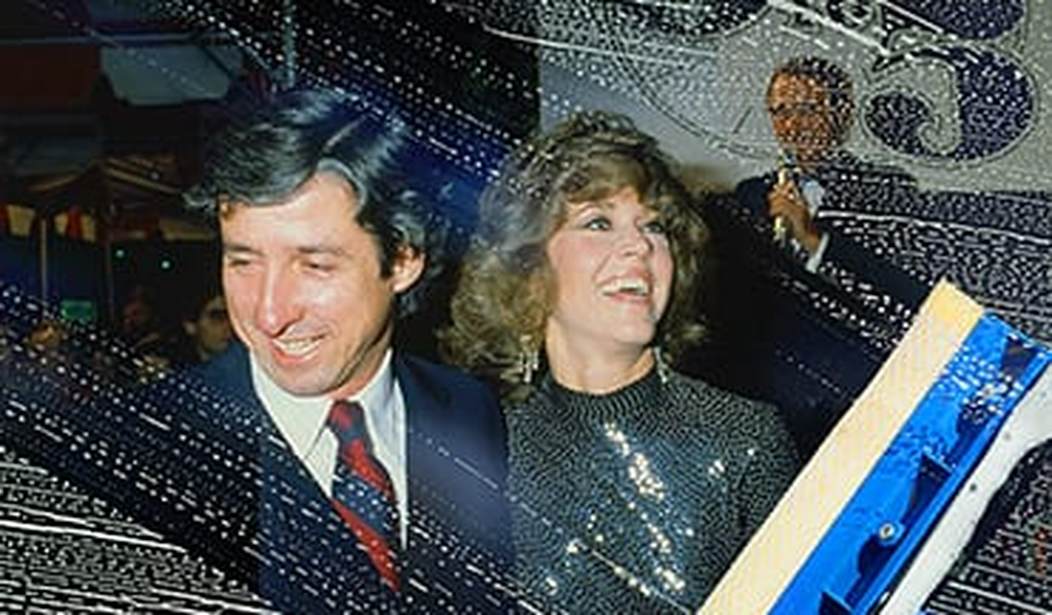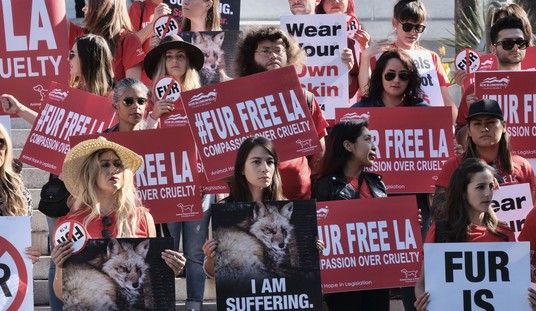The death of Tom Hayden last Sunday at the age of 76 produced obituaries and tributes in scores of newspapers throughout the United States, as well as notices of his passing on major network news programs. In the 1960s, Hayden helped define and popularize Students for a Democratic Society (SDS), which garnered support on many college campuses. It was Hayden who made the phrase “participatory democracy” popular, by which he and the original author of the phrase, philosopher Arnold Kaufman, meant that individuals should have decision-making power in all decisions that affect their lives. A new politics, Hayden believed, would lead to “common participation” and put an end to apathy and the meaningless, corrupt politics of the mainstream political parties.
Newspapers now have produced glowing and inaccurate accounts of Hayden’s life and politics. Most egregious was The New York Times, which started incorrectly by writing that he “burst out of the 1960s counterculture as a radical leader of America’s civil rights and antiwar movements.” However, unlike the apolitical and culturally oriented counterculture leaders–such as contemporaries Abbie Hoffman, Jerry Rubin and the so-called “Yippies”—Hayden always was political and committed to building a serious political movement, not one based on “tuning in, turning on and dropping out.”
The worst claim in the Times’ obituary is that Hayden was a “peace activist” who “opposed violent protests but backed militant demonstrations.” He could be called a peace activist only if one views someone who supported a Communist victory in Vietnam as a proponent of “peace.” As I have written in a past PJM column, Hayden “moved to create his own group, the Indochina Peace Campaign, which fought nationally for an end to the war in Vietnam. He and his wife, the movie star Jane Fonda, traveled to North Vietnam, where he took a camera crew and came back with a propaganda film: Introduction to the Enemy. Hayden would write after his first trip to Vietnam that the Vietnamese Communists had created a “rice-roots democracy.” After the war’s end, when Joan Baez passed around a petition protesting the human-rights violations of the winning Communist side in Vietnam, Hayden denounced those who signed it as tools of the CIA.”
On foreign policy, Hayden always supported America’s enemies, be it North Vietnam or Castro’s Cuba. He opposed what he termed the “cold war mentality,” his term for the bi-partisan policy of opposing Soviet expansionism. Hence he referred to the work of the AFL-CIO to fund labor unions in authoritarian and totalitarian regimes, which opposed free labor unions, as part of CIA “covert operations” he claimed were run “through the AFL-CIO’s international affairs department.” It is no wonder he bragged to one and all that he opposed “the secret pro cold-war element within liberalism, directly and indirectly tied to the CIA.” In making these claims, Hayden was using the exact terminology created by the Communists and pro-Soviet fellow-travelers of the Old Left.
As for being against violence, during the violent demonstrations by the New Left at the 1968 Democratic convention in Chicago, Hayden gave a speech in Grant Park, saying: “Let us make sure that if our blood flows, it flows all over the city.” Hayden supported the Black Panther thugs led by Huey Newton and Bobby Seale and was a member of the Berkeley commune called “the Red Family,” whose members engaged in target training to be prepared for the Revolution.
Perhaps his most notable endorsement of violence came from an article he penned in the August 24, 1967 issue of The New York Review of Books in which he wrote:
The actions of white America toward the ghetto are showing black people that they must prepare to fight back. The conditions are slowly being created for an American form of guerrilla warfare based in the slums. The riot represents a signal of this fundamental change….
The role of organized violence is now being carefully considered. During a riot, for instance, a conscious guerrilla can participate in pulling police away from the path of people engaged in attacking stores. He can create disorder in new areas the police think are secure. He can carry the torch, if not all the people, to white neighborhoods and downtown business districts. If necessary, he can successfully shoot to kill. The guerrilla can employ violence effectively during times of apparent “peace,” too. He can attack, in the suburbs or slums, with paint or bullets, symbols of racial oppression. These tactics of disorder will be defined by the authorities as criminal anarchy. But it may be that disruption will create possibilities of meaningful change…. Violence can contribute to shattering the status quo, but only politics and organization can transform it.
All of the current tributes to Hayden give credence to his false claim that he had left behind the idealism of his youth to move into “mainstream” politics. He achieved some success by being elected to the California State Assembly from 1993 to 2000. But, he later lost in the races to become the nominee in the primary for California’s Democratic senatorial candidate in 1994, to be mayor of Los Angeles in 1997, and to gain a seat in the L.A. City Council in 2001.
His far-left critics, of course, accused him of selling out because he ran for political office on the Democratic ticket. Hayden used this as proof that he had become “a born-again Middle American” who acknowledged that he had been guilty of “romanticizing the Vietnamese” and allowing his opposition to the war to make him seem to be anti-American. Of course, he never gave up his extremist far-left views; he simply submerged them temporarily in his effort to gain influence and power in democratic elections. One he lost and could not progress any further than he had, he quickly moved to affirm his earlier far-left activities and views.
If there was one thing he was guilty of, as critics on both his left and right said, it was opportunism. His was so blatant that the late social-democratic critic Irving Howe wrote that he saw Hayden as a man who “gave opportunism a bad name.”
Despite his claims, Hayden hadn’t changed all that much. After 9/11, he opposed all efforts undertaken to create mechanisms for stopping the increased terrorist threat from Al Qaeda and other groups, writing the following:
In the aftermath of September 11, American conservatives launched a political and intellectual offensive to discredit any public questioning of the Bush administration’s open-ended, blank-check, undefined war against terrorism. The conservative message, delivered through multiple media outlets, was that dissenters from the Bush administration’s war were those who allegedly “blamed America first,” that is, dared to explore whether Bin Laden’s terrorism was possibly rooted in Western policies toward the Islamic world, the Palestinians, and the oil monarchies of the Middle East.
It was the old leftist refrain that if there was terrorism, it was America’s fault, and only “conservatives” favored a “war on terror” because they needed an excuse to create a wartime oppressive state that controlled the American people and prohibited their right to protest all measures taken in the name of fighting terrorism.
More recently, Hayden turned back to one of his first loves, Communist Cuba. He spun out propaganda for the Cuban regime in American newspapers, as well as in a new book co-authored with a Cuban Communist retired diplomat. In what might be the vilest words he penned, Hayden wrote:
A sticking point on the U.S. side was the persistent funding of “democracy promotion,” or our secret efforts to promote a more open society. Alan Gross was a covert agent, not a home appliance distributor. The Cuban Five were protecting Cuba’s security from us, not acting as terrorists.
Gross, in fact, was both innocent and almost died in Cuba’s prison where he was held as a bargaining chip to gain freedom for their Cuban spies in America, who were found guilty in a trial for espionage against the United States. Showing his true colors, Hayden simply asserted—without a shred of evidence—that Alan Gross was an American spy in Cuba. And that the Cuban five—real spies sent to the U.S. by Castro’s spy service—were there, not to pry U.S. military secrets, but to protect their country from the U.S., which in his eyes makes them harmless and innocent.
Recently summing up his thoughts on Cuba, he claimed:
The Cuban Revolution has achieved its aim: recognition of the sovereign right of its people to revolt against the Yankee Goliath and survive as a state in a sea of global solidarity. At the same time, America will benefit from being warmly received into the new Latin America when immigrants’ rights are a more important issue.
Finally, on a personal note, over the years, I had some interactions with Tom Hayden. The most memorable took place sometime in the 1970s or 80s when I was still on the left. Hayden had just published a book about his program to attain what he called “economic democracy.” I reviewed it for a small-circulation democratic socialist newsletter, read by a small number of people. Immediately after the review appeared, the phone rang. Picking it up, I heard a voice say: “Ron, this is Tom Hayden.” I had no idea why he was calling and what he wanted.
It turned out that Hayden had just read my critical review, and was very upset. Essentially, I accused him of political cowardice. He was masking a call for socialism by calling his goal “economic democracy,” which I argued was simply an uncalled-for euphemism. I agreed to meet him the next day at an office.
At the meeting he pleaded with me to reconsider what I had written and to write another review praising his book. I said he could write a serious answer to which I could respond, and we would have a dialogue. He wouldn’t accept that; he only wanted me to retract my negative review and to write a positive one, explaining to readers that I had reconsidered what I wrote and hence wrote a new one that was positive.
Then, Hayden told me to wait a minute and he made a phone call. He had phoned his editor at the book company that published it, and told him: “I’m sitting here with Ron Radosh and am urging him to write a new positive review.” Then he insisted I talk to the editor and listen to his plea that I do the same. Again I refused, and said as nicely as I could that it would not happen. He was very upset and most disappointed.
I had learned that the militant advocate of every radical and anti-American group and creed had a very thin skin; he could not tolerate a negative review for a relatively unimportant book among all those he had written, and was responding to a review perhaps read by no more than a few hundred people. And yet he could not let it rest. Never have I had any author whose book I reviewed come to plead with me to rewrite my review and change my opinion of the book.
Hayden was wrong about almost everything, but if he succeeded at all, it was to infuse his ideas and attitudes into the left wing of the Democratic Party. In the end, Hayden returned to the fierce leftist positions he had always taken, but temporarily hidden during his brief attempt to go “mainstream.” One example is taken from a prominent leftist, Phyllis Bennis. Writing at The Nation website, she recounts that she did not talk to him for 20 years, because in the 1980s, he and Jane Fonda were strongly pro-Israel. (Indeed, Nat Hentoff and I went to hear both speak at a New York synagogue where they spoke out on behalf of Israel.) Not to fear, Bennis notes that in 2005 Hayden told her he had “been bought” by the Israeli lobby in L.A. when running for the state Senate. Hence, he wrote, he retracted his views, acknowledged he was wrong, and attacked Israel in the pages of the leftist journalist Robert Scheer’s Truthdig.
In 2012, when “Occupy Wall Street” broke out and seemed to be signaling a radical revival, Hayden viewed it as an example of “countless Davids taking on the smug Goliath in spontaneous planetary resistance.” Writing in The Nation, he welcomed what he called “the smoldering division between unelected wealthy and foreign private investors and the participatory democracies of civic societies with their faltering elected governments.” He was still trying to prove that the new protests were the effect of his old Port Huron Statement.
Yet, it seems that he had decided to support Hillary Clinton rather than stand with Bernie Sanders’ holdouts, on the grounds that he could help a new young New Left build a movement that would force her when president to adopt leftist programs rather than move to the center. Throughout his twists and turns, Hayden remained a man of the far left, who used different tactics that squared with the different phases of the times he lived in.
Tom Hayden: 1939-2016. R.I.P.









Join the conversation as a VIP Member